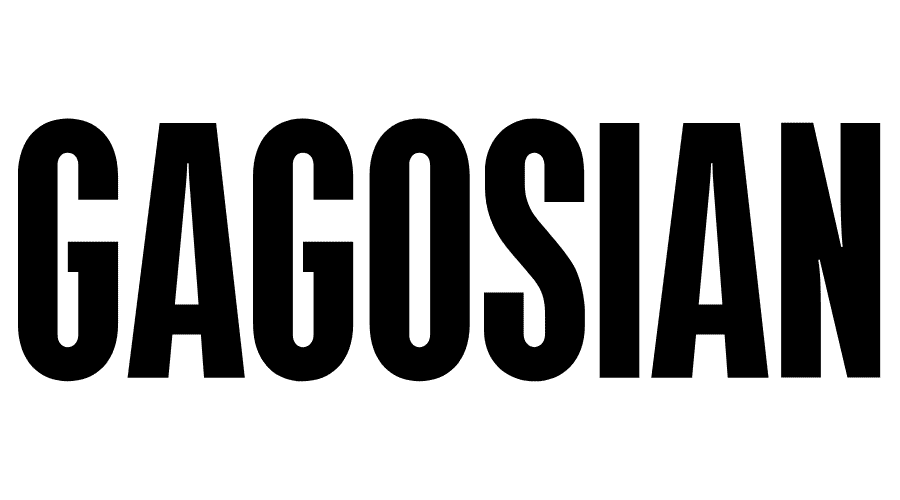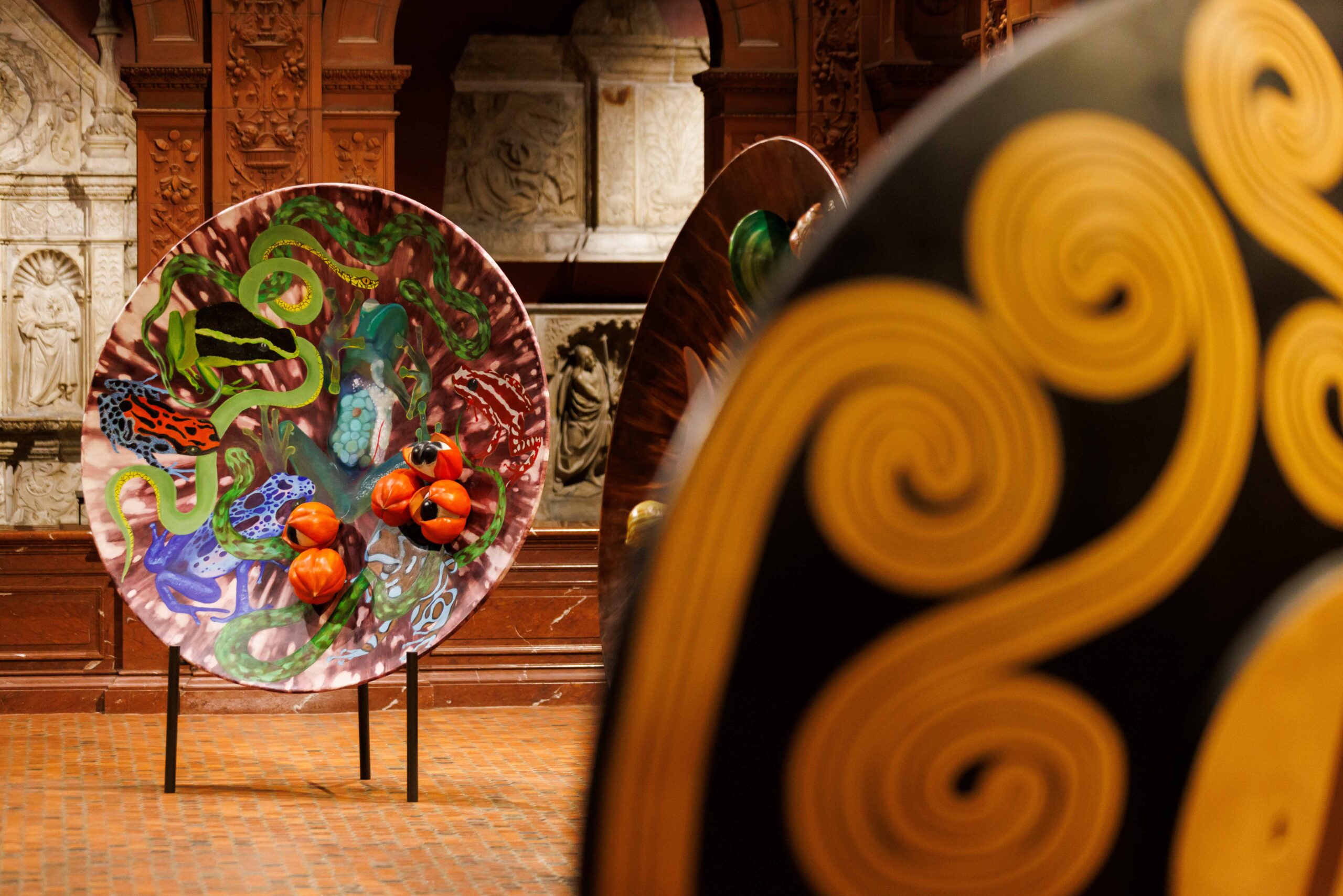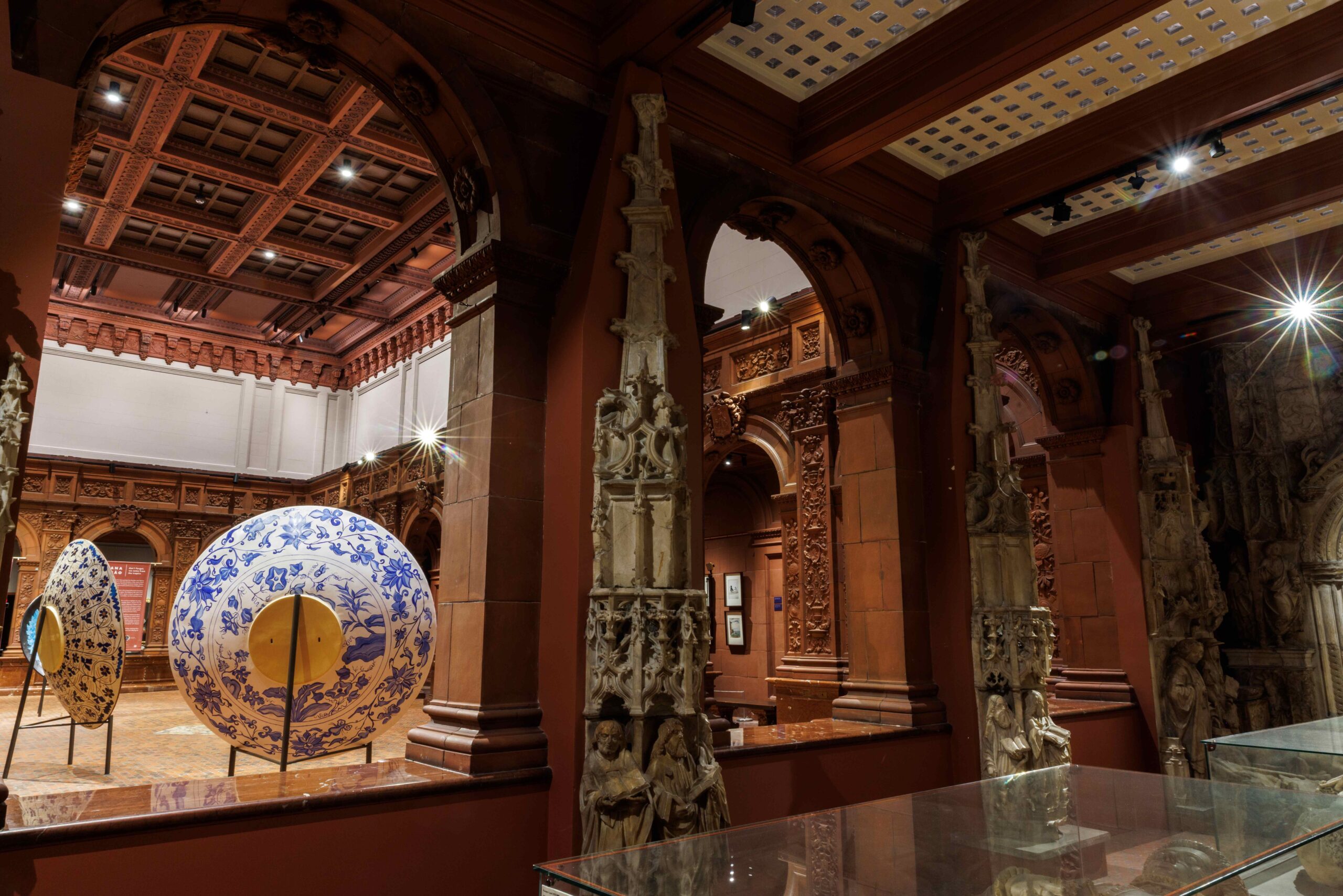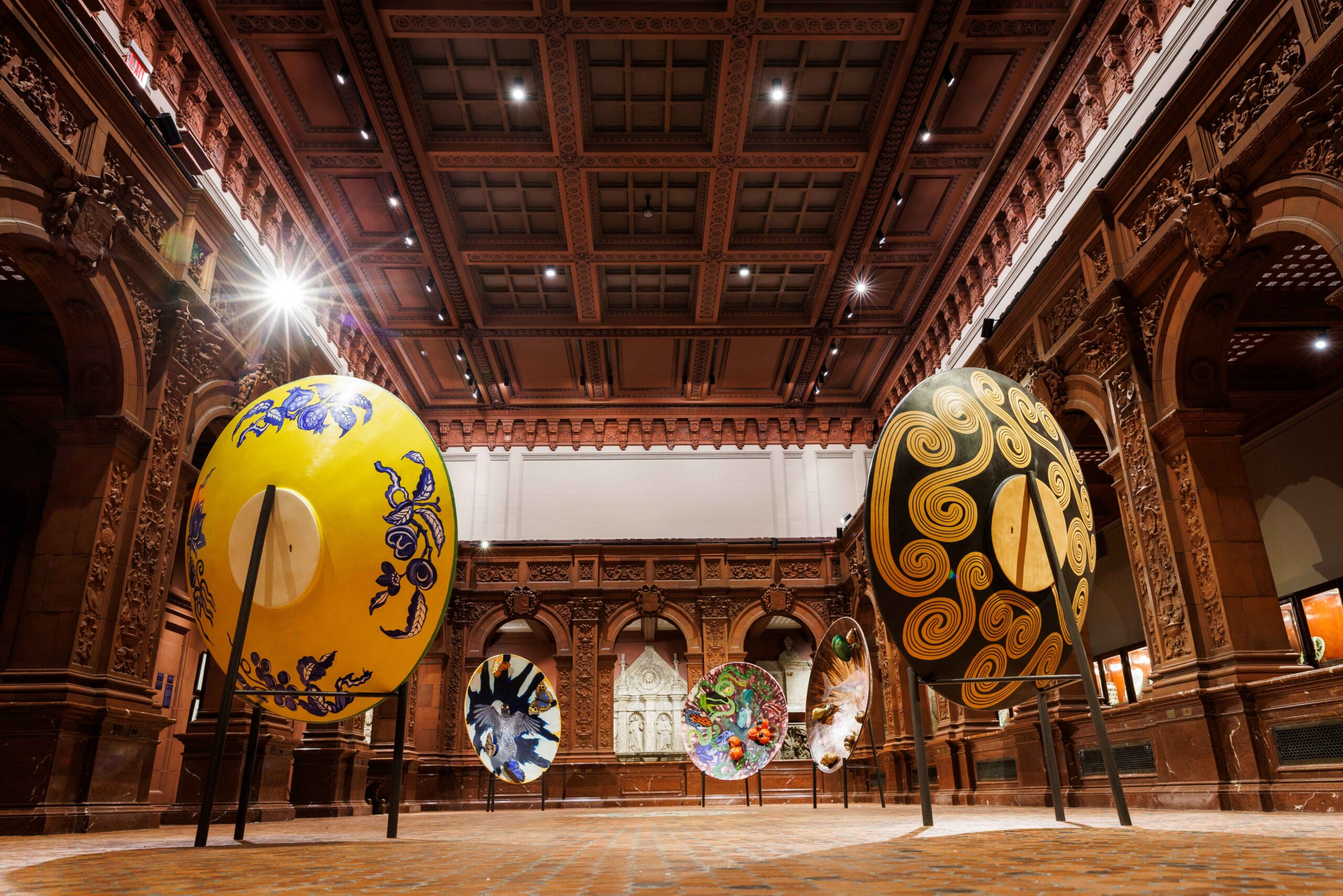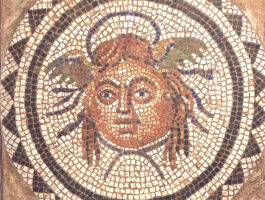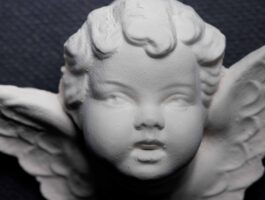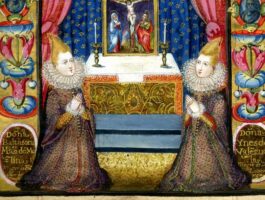The Hispanic Society Museum & Library is pleased to present Adriana Varejão: Don’t Forget, We Come From the Tropics, an exhibition of new paintings and sculpture by leading Brazilian artist Adriana Varejão. The show features new paintings from Varejão’s acclaimed Plate series and a site-specific outdoor sculptural intervention.
The new works reflect on the Amazonian rainforest as a vital nexus of ecology, art, and culture. Stemming from Varejão’s participation in the inaugural Bienal das Amazônias (2023), they also mark two decades since the artist began conducting research with the Yanomami people in the Amazon basin. The exhibition debuts the latest additions to Varejão’s celebrated Plate series, inspired by historic Palissy ceramics. These large-scale fiberglass tondos boast protruding three-dimensional elements which are hand-sculpted and painted in oil. The front of each plate is adorned with exuberant imagery of Amazonian flora and fauna, while the reverse evokes designs from historic ceramics from the Hispanic Society’s collection and beyond, including Spanish Valenciana, Ottoman Iznik, Ming Dynasty Hongzhi porcelain, and pre-Columbian Amazonian Marajoara pottery.
In front of the museum, Varejão activates the institution’s 1927 equestrian statue of El Cid by Anna Hyatt Huntington with a monumental sculptural intervention. In this new site-specific work, a vibrantly painted fiberglass sucuri (Amazonian anaconda) coils around the bronze warrior, confronting the statue’s symbolism of imperialism, masculinity, and man’s domination of nature.
In addition to producing new works, Varejão has curated a selection of historic ceramic plates from the Hispanic Society’s collection to display alongside her Plate series. By placing these ceramics in conversation with her monumental paintings, she raises provocative questions about the hierarchies of aesthetics. Historically, ceramics have been relegated to “craft” or “decorative arts,” secondary to painting and sculpture. Varejão challenges these assumptions, creating sculptural paintings inspired by ceramics from the past. Her works blur these boundaries, demonstrating how ceramics, with their evolutive essence and origins in every culture, can engage with contemporary issues and enrich our understanding of art. Read more about the ceramics on view from the Hispanic Society collection here.
The exhibition’s title, Don’t Forget, We Come From the Tropics, is both a tribute to the natural and cultural vitality of Brazil and an homage to one of its distinguished artists, Maria Martins, who famously declared, “Don’t forget, I come from the Tropics.” This embrace of tropical and Baroque aesthetics celebrates the vibrancy of the Latin American world.
Organized in collaboration with Gagosian, the exhibition exemplifies the Hispanic Society’s commitment to fostering meaningful dialogues between historical and contemporary art.
The following is an excerpt from an essay entitled “Adriana Varejão: Don’t Forget, We Come From the Tropics,” by Louis Vaccara which will be published in the upcoming edition of Gagosian Quarterly Magazine.
“To say ‘I love you,’ the Yanomami say, ‘Ya pihi irakema,’ meaning ‘I have been contaminated by your being’—a part of you has entered me, and it lives and grows.”
—David Servan-Schreiber, The Instinct to Heal, 2005
The first work from Adriana Varejão’s new body of plate paintings, Mucura (2023), debuted at the inaugural Bienal das Amazônias. The piece addresses concepts of creation and the body. Set against the verdant contours of the rainforest, light pierces through a dense canopy of cascading vines, illuminating a lush glow as if the rainforest were alive with secrets. Emerging from within is a silhouette of the artist’s own pregnant body, painted after an old photograph, merged with the head of a mucura, the Amazonian opossum. The mucura is among the most fertile mammals, capable of carrying up to three pregnancies annually, and they are remarkably immune to snake venom. A symbol of femininity, fertility, and resilience, these ancient marsupials embody survival and continuity in the world’s largest ecosystem.
In Urutau (2025), Varejão continues her exploration of stories about the feminine divine from the Amazon rainforest by depicting the celestial nocturnal bird, urutau, meaning “mother of the moon.” The urutau’s haunting song has inspired legends about women transforming into these birds and singing to the moon after experiencing heartbreak. In Brazilian mythology, the Tupi moon goddess Jaci gave birth to the Amazon River and all the life it sustains. Against a background of bright white brushstrokes on deep midnight blue, Varejão evokes a moonlit forest where the urutau spreads its wings and looks down at us with a piercing fiery gaze. Three-dimensional butterflies adorning eye-like patterns orbit the scene like celestial messengers, while the moon, positioned at the center of the plate, casts its silvery light, inviting reflection on nature’s quiet power and its enduring mysteries.
